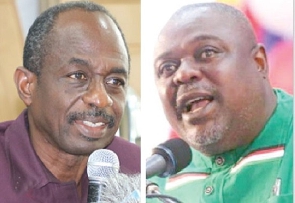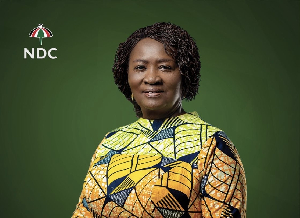The start of the week saw the Monetary Policy Committee (MPC) of the Bank of Ghana announcing a reduction in the policy rate by 50 basis points to 25.5 per cent.
Previously, the rate had held at 26 per cent, as the preceding MPC meetings felt, after deliberations, that to strap the risk of inflation it was better to keep it unchanged.
So what has changed? Well, an awful lot, according to the press statement on November 21 announcing the MPC decision to reduce the rate.
“Headline inflation has gradually trended downwards in the year, despite some upswings occasioned by pass-through effects of upward adjustments in petroleum, utility and transport prices.
“Policy tightness and continued stability of the exchange rate largely accounted for the declining trends”, Governor Dr. Abdul-Nashiru Issahaku said in his accompanying notes on the decision.
Further, Dr Issahaku pointed to the latest release from the Ghana Statistical Service on inflation as one of the indicators that had aided the decision to lower the policy rate.
The statistical evidence shows that after peaking at 19.2 per cent in March 2016, headline inflation fell sharply to 15.8 per cent in October.
“The most recent decline in inflation was driven mainly by non-food inflation”, the Governor stated.
Monetary policy rate is an indicative rate that guides lending in an economy and therefore, the tool that a central bank would use, under certain conditions, to steer the economy towards a desired or expected target.
And, broadly, the policy rate as a guide for all other market interest rates, also guides commercial banks in their interest rate setting. Again, that rate also indicates the rate at which commercial banks can borrow from the central bank.
To put it in a practical perspective let us consider this example: HMD Bank, a commercial bank of repute, lends money to Adjoa, who is into the bakery business. Adjoa secured an amount of 100 cedis at a rate of 2 per cent per annum.
The loan is to fulfill a large order for pastries that was above her normal operating capacity. She is expected to pay back the principal and the interest within a year, at the most.
The basic explanation is this: Adjoa will pay GH¢2 interest over the 12 months period if all conditions stayed the same, and assuming she took the loan at a fixed rate of interest.
However, if the loan was on a variable rate of interest, it means that a change in the interest rate will most likely affect the amount she has to pay during the tenure of the facility.
So, practically, if the prevailing policy rate in Adum Country, where HMD Bank is located, was 1 per cent, and the Bank, factoring in its cost of providing banking services charged 2 per cent for loan facilities, then it means that if the policy rate moves up to 1.5 per cent, the likelilood that HMD Bank would move up its rate is high. That is how, in simple terms, the policy rate works.
Let me, at this point, repeat what l stated in the Friday, July 22 edition of this column, shall l? Good. In that edition, l mentioned that it isn’t always that the commercial banks’ retail lending rate moves in lockstep with the policy rate of the central bank. Commercial banks may act otherwise, depending on a number of factors.
Yes, several factors determine the cost of credit and these can be categorised into the following broad areas: cost of funds to the financial institution, the institution’s operating cost, the non-performing loans portfolio, competition in the banking sector and also your own risk profile.
When you look at the cost of funds to the bank or the financial institution, it is how much it cost that institution to secure the money that is lent to you.
You see, ordinarily, the primary function of a bank is to accept customers’ deposits and pay them on demand. That is, the deposits that it receives from you, the customer, also forms part of what it gives out.
When such deposits are not enough to fulfill all lending obligations or other obligations, it may resort to borrowing from the “open market”. The secured funds also come with cost and that cost is factored into the pricing of the loan product.
Deposits become a cheaper source of funding because the bank is able to control the deposit interest it pays. Where it is borrowing money from another financial institution, chances are, it would be much higher than the deposit interest that it has to pay out to you, the depositor.
Next is operating cost. This is the cost that the bank would have to bear in order to be in “operation”. The cashier, the bank manager, loan officers and all staff, basically, need to be paid for looking after you. They are all human and bear some level of risk too. So, operational risk must also be factored into the pricing of the loan product too.
However, currently the Bank of Ghana is reviewing the base rate formula used by banks to reflect their actual cost of funds to minimise the tendency for banks to pass on their inefficiencies to borrowers in the form of higher lending rates.
Non–performing loans (NPL), mostly driven by the bad behaviour of some borrowers also impact on the cost of funds, ultimately.
Captured, broadly as part of the credit risk assessment in loan pricing, where the financial institution finds that there is a higher propensity for people to borrow money and not pay back, then it would have to charge a much higher interest in order to compensate for those who wouldn’t pay, literally.
In effect, good borrowers pay for the bad ones. Of course, there could be some level of inefficiencies on the part of the banks themselves leading to high NPL and it is for this reason that the review alluded to above is taking place to ensure that we don’t end up paying for the operational inefficiencies of the banks too, through high cost of credit.
And, lastly, your own risk profile as a borrower has a “base effect” on the interest that you pay on your credit facility.
Even though it is difficult to find some of these assessments in developing countries because of inadequate credit history profile, in the advanced countries, credit reference agencies are able to help in individual loan pricing so there is the classification for prime and sub-prime borrowers, with the applied interest rate the determining factor.
It must be pointed out that currently, there are credit reference agencies in Ghana that are working with the banks on a similar strategy.
All in all, it is a collective responsibility if interest rates are to come down the way we want them to be.













